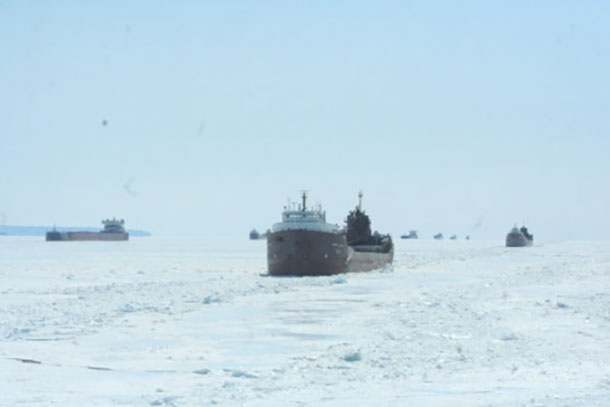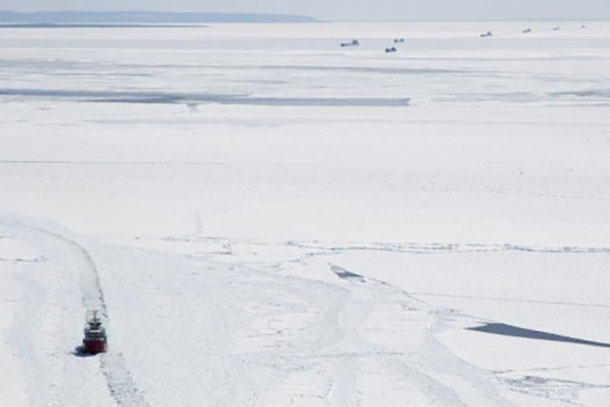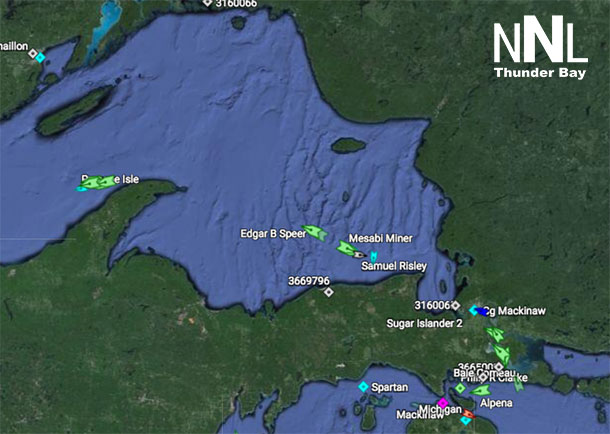

SAULT STE MARIE, Mich. – The U.S. Coast Guard and Canadian Coast Guard continue to break ice on eastern Lake Superior for vessels that are waiting to transit to and from the lower Great Lakes.

U.S. Coast Guard Cutters Mackinaw and Alder are teaming up with the Canadian Coast Guard Cutter Samuel Risley to create tracks that will enable vessels to continue transiting with cargo to and from various ports. A second Canadian Coast Guard Cutter, Pierre Radisson, is expected to arrive in the area this afternoon.
These ongoing operations are part of Spring Breakout phase of Operation Taconite.
Warm temperatures during the past several weeks led to considerable melting on Lake Superior, which was still more than 75 percent ice-covered two weeks ago. Meanwhile, heavy winds during the past several days have pushed much of this lake ice into the eastern part of Lake Superior, jamming up against the already-ice covered waters of Whitefish Bay. As a result, 18 vessels transiting the area are temporarily stopped and are now staged, waiting for the supporting ice breakers to create tracks through the ice jam so vessels can continue their voyage.

In addition to eastern Lake Superior, the U. S. Coast Guard has one ice breaker in the Straits of Mackinac, two ice breakers on the lower St. Mary’s River, and another in Georgian Bay to conduct vessel assistance and flushing operations. Flushing ice enables the waters of the Straits and rivers to carry chunks of ice out into the open lakes to further melt.







